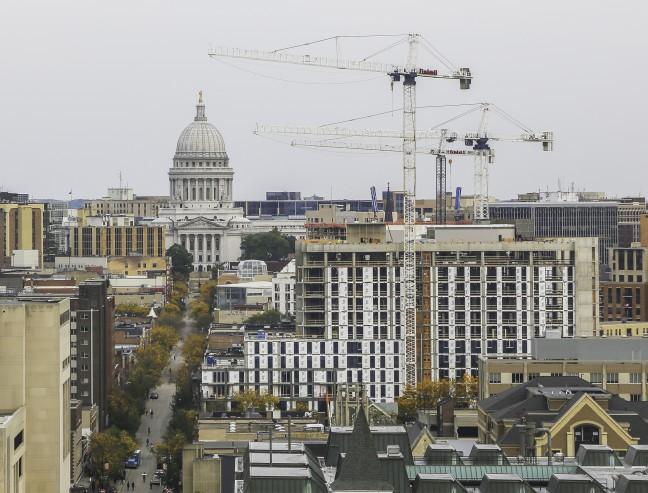New high-rise apartment buildings are not going away. As the current new crop eagerly anticipates their first August opening, even more are under consideration at various city meetings. Thus, the circle of construction continues. Many students, both in their writing to The Badger Herald and in private, lament the growth of these monstrosities that are often far more expensive than many students can afford. I defend new high rise apartments as a necessary part of Madison’s growth and I’ll continue to do so. While other forms of construction would probably be more beneficial to the student population, logistically, I don’t think they are currently feasible.
Right now, there is a lot of untapped demand in the Madison market. Most estimates place the vacancy rate around 2.4 percent which means there are few apartment options at any given time. For students, this is apparent when you start getting emails threatening “Only one apartment left for next year!” in early December. There are many apartments in downtown Madison, and there are also many people wishing to live downtown, from families to young professionals. Developers on West Mifflin want to build an apartment that caters to both students and young professionals, and recent presentations for the Hub II claim to seek both students and “market-rate” tenants.
Currently, these types of developments are attractive because the city can build new apartments without substantive subsidies as there is enough demand to support it. The developers foot much of the cost and then can charge rent appropriately to recoup it. If the city did reject the Hub II or similar high end complexes to effectively force developers to build lower-rent apartments, what would the logistics be?
There are two ways to cut costs: lower quality or through subsidies. Well, you could also lower demand, but I don’t anticipate enrollment dropping off tremendously or the city to experience a mass exodus of people anytime soon.
Lower quality means just that. Right now, developers are throwing money around knowing someone will pay for it. Hot tubs on balconies, high end appliances, underground parking are all very expensive features someone wants. If the city forces developers to build lower-cost units at the expense of higher-cost units, the developers will need to invest less money because the rent revenue will not be as high. This could mean a lack of underground parking – which is exorbitantly expensive – cheap materials, poor insulation or a lack of amenities. I don’t think this is the answer most students are looking for. Additionally, these new low-quality units will likely be more expensive simply because they are new.
Subsidies are the other big way of decreasing consumer cost. However, traditional housing subsidies don’t include students unless there are non-students also in the household. Some places downtown like the Madison Mark include these subsidized rates, but not all new constructions do. If the city is serious about only constructing new apartments that are affordable to students, a subsidy to developers may be the only way around the lower quality problem mentioned above. For a subsidy to work, the city would have to offset some of the developers’ costs in exchange for guarantees on rent control for a certain period of time. While probably effective in keeping rent low, these units will face tremendous demand and when then city’s terms expire, rent will shoot up.
I think we can have our cake and eat it too by focusing affordable and quality housing solutions at the “house” level. If the city offered a grant program to owners of deteriorating housing units in student-heavy areas like Mifflin, Breese or Vilas, subpar housing could be brought up to a minimum standard at an affordable rate. The city could offer to match a percentage – let’s say half – of the cost of full renovations in a unit if the owners agree to keep rent below a certain value for the next several years. This way the city can guarantee apartments in the “student slums” can be kept up-to-date and appealing for students who don’t want to live in the poor-quality apartments that are stereotypical for the areas, and want affordable rent. The owners of the unit also benefit, but cannot increase their rates past a city-determined amount to unfairly benefit off the backs of students.
This isn’t a perfect solution either; I don’t think one exists. What we can do is make sure students are engaged with the process so we come to a solution that is acceptable to everyone, even if it’s not perfect for everyone.
Adam Johnson (amjohnson25@wisc.edu) is a Masters candidate at the La Follette School of Public Affairs.


